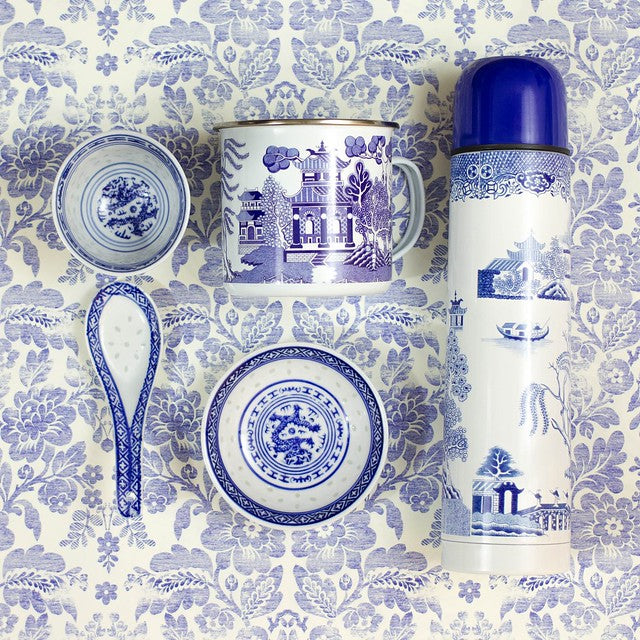
Out of the Blue: Five Fun Facts About Classic Blue and White
You might have heard Pantone’s Color of the Year for 2020 is Classic Blue. It’s already one of our favorites (after red of course), but what’s even better, at least in our opinion, is classic blue on white. Here are five fun facts about this color combo that will never go out of style.
Some of the oldest blue and white ware was found on a shipwreck
Called qīng-huā (literally “blue flowers”) in Mandarin, blue and white ware has a long history and tradition in China. The earliest evidence dates back to the Tang Dynasty (618-907). While a plate and shards were found in 1975 in Yangzhou, three intact blue and white Tang Dynasty plates were discovered in 1998 on what’s been dubbed the Belitung shipwreck off the island of Belitung, Indonesia. You can see one of the plates here as part of the Asia Society’s exhibition in 2017.
The sunken boat also contains the largest collection of Tang Dynasty artefacts in one location. The collection is currently housed in the Asian Civilizations Museum in Singapore.
It got popular in China thanks to Iran
It wasn’t until the early 14th century during the Yuan Dynasty that Chinese blue and white porcelain reached its maturity. By this time the cobalt was being exported from what is now Iran. The combination of the bright blue mineral with the translucent white pottery of China resulted in a hot commodity, and mass production began in the city of Jingdezhen, known as the porcelain capital of China.
The Mongols had a great influence
During the Yuan Dynasty, China was ruled by the Mongols, starting with Kublai Khan, a grandson of Genghis Khan, the founder of the Mongolian dynasty. As such, It’s believed that Mongolian myth and culture had a large influence on the blue and white ware of China.
Many Mongolians believe they’re descended from the mythic “blue wolf” and “white doe.” (Bonus fun fact: Retired Mongolian professional wrestler Dolgorsürengiin Serjbüdee wrestled under the ring name, Blue Wolf.) Hence, the significance of those colors and of blue and white porcelain, which during their rule was used only for special gifts and occasions.
It was big in Korea and Japan too
Influenced by Chinese porcelain, Korea also began producing blue and white ware in the early 15th century. Meanwhile in Japan, porcelain production didn’t begin until the early 17th century. These first porcelain pieces, called Imari after the port near the kilns in the town of Arita, were actually created by Korean potters who had settled in Japan. Like Chinese porcelain, most Imari pieces were painted with cobalt blue on white, the design of which is known as sometsuke, meaning “with dye,” due to its resemblance to dyed indigo blue.
The Europeans learned how to make it thanks to a spy
Europeans also liked what they saw in terms of Chinese blue and white ware. Starting in the 16th century, they began trying to imitate it. However, they couldn’t quite figure out the secret recipe. One guess was that it was “an eggshell-and-fish-scale mixture that was shaped into plates and vases, and then left underground for a century to cure.”
The French court in particular was keen on figuring out how the porcelain was made and tasked a Jesuit priest with getting the intel. Francois Xavier d’Entrecolles, who was fluent in Chinese, spent a lot of time in Jingdezhen porcelain factories, trying to dig up the dirt. It was quite an effort. He sent his first letter with detailed instructions 10 years after his arrival in China, and his second another decade later. By the early 18th century, European countries were producing their own Chinese-style blue and white ware, all thanks to a Jesuit spy.
Have a hankering for blue and white ware? Check out our collection.